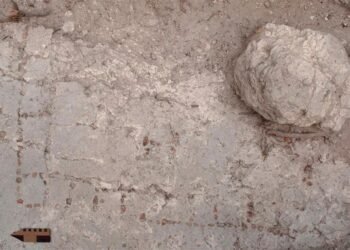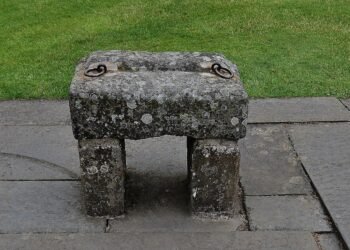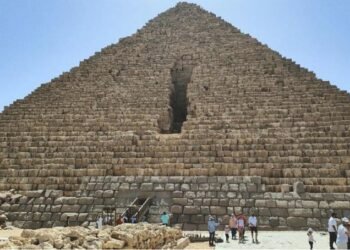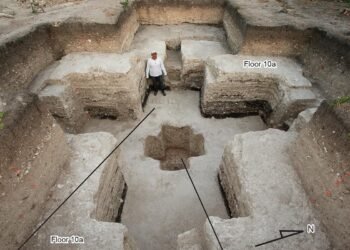Amber, the fossilized tree resin treasured for its warmth and beauty, held significant cultural and symbolic importance for the Mycenaeans, one of Greece’s earliest civilizations. This connection between amber and the Mycenaeans is explored in a new study led by Professor Janusz Czebreszuk, the Director of the Polish Archaeological Institute in Athens. According to Czebreszuk, amber, which represented the sun and status, was a marker of elite standing in Mycenaean society, which flourished from roughly 1750 to 1050 BCE during the final phase of the Bronze Age.

The Mycenaeans, recognized as the first advanced civilization on the Greek mainland, were known for their grand palaces, organized cities, unique script, and impressive art. Their appreciation for amber was primarily among the upper class, who displayed this resin as necklaces, pectorals, and other adornments in their graves. Research indicates that most amber artifacts found in Mycenaean graves originate from the Baltic region, specifically near the Bay of Gdańsk, a notable trading hub for amber both in ancient times and today. This discovery suggests a vast trade network that connected the Mycenaeans to distant lands and other elites across Europe.
During an interview with PAP, Professor Czebreszuk explained that amber likely came to Greece with the Mycenaeans as they migrated from the north, possibly from areas like Macedonia or Epirus. The Mycenaeans, he noted, may have carried with them religious and cultural beliefs linked to the material. “Amber arrived in Hellas with the religious meanings it held in the north,” Czebreszuk said. “In Central Europe, Neolithic artifacts like disc-shaped items with radiating patterns clearly referenced the sun, and amber symbolized the sun’s power.”
The mythological associations of amber further enhanced its value. In Greek mythology, amber was linked to the story of Phaëton, the son of Helios, the sun god, whose sisters’ tears turned into amber after his tragic death. This connection with the sun reinforced the belief that possessing amber was akin to holding a piece of the sun itself. Mycenaean elites, therefore, used amber as a means to claim divine power and reinforce their elevated status. Czebreszuk remarked, “Whoever had amber, whoever had an amber necklace, in a sense possessed a piece of the Sun. Those who had it, and these were the elites, used amber to legitimize their claims to a superior position in society.”

The trading of amber was facilitated by widespread social networks across Bronze Age Europe, which, as genetic studies suggest, were often cemented by interregional marriages. Amber circulated among these elite networks, forming part of a larger exchange system that linked distant areas from the British Isles to Ukraine. “Amber had a wide distribution,” Czebreszuk noted, emphasizing that ancient deposits were primarily known in areas around the Baltic and North Sea. Even then, the Gulf of Gdańsk was recognized as a center for amber trade.
Established officially in 2019, the Polish Archaeological Institute in Athens allows Polish researchers to conduct independent studies in Greece, where they explore artifacts like amber to understand ancient production techniques, cultural exchanges, and the significance of various materials. “We can determine where the find originated, where the workshop was, and what knowledge the producer had,” Czebreszuk explained. By examining fossil resin varieties such as succinite, researchers can learn not only about the Mycenaean elites who wore these amber pieces but also about the vast networks that facilitated their exchange across Europe.























